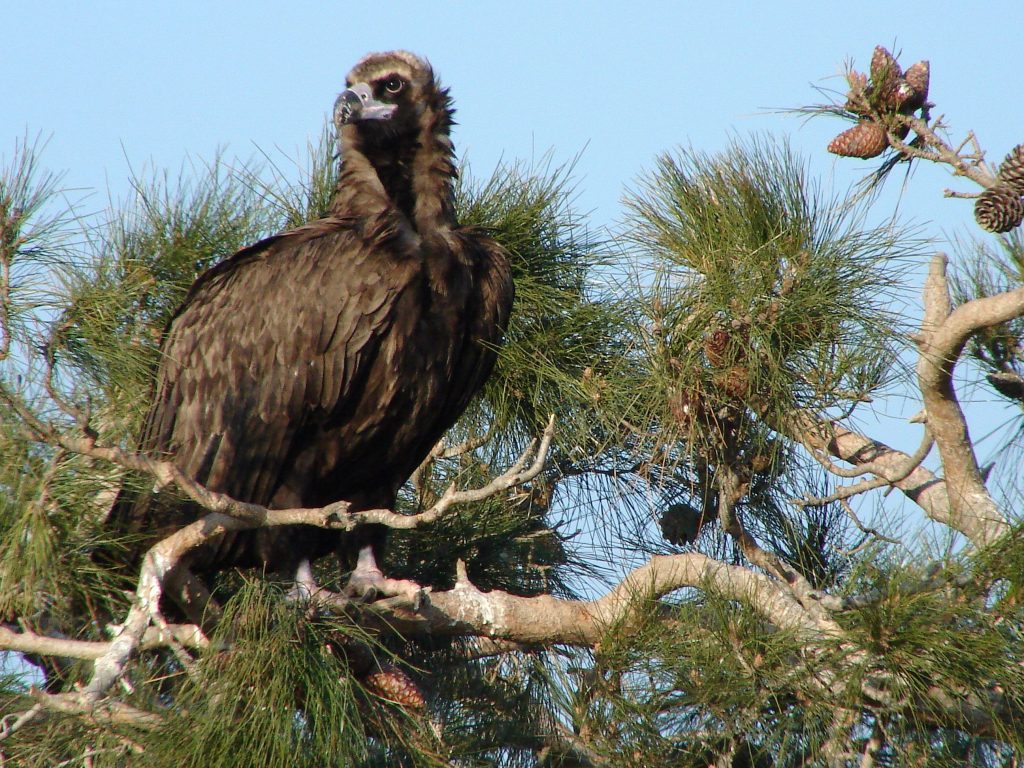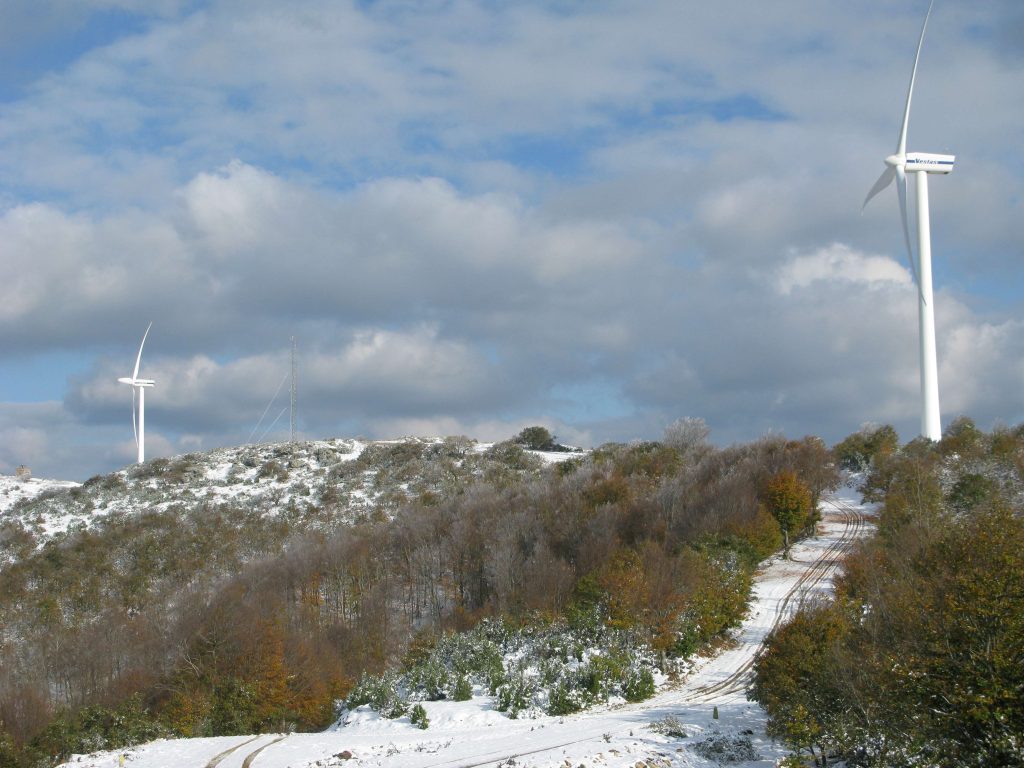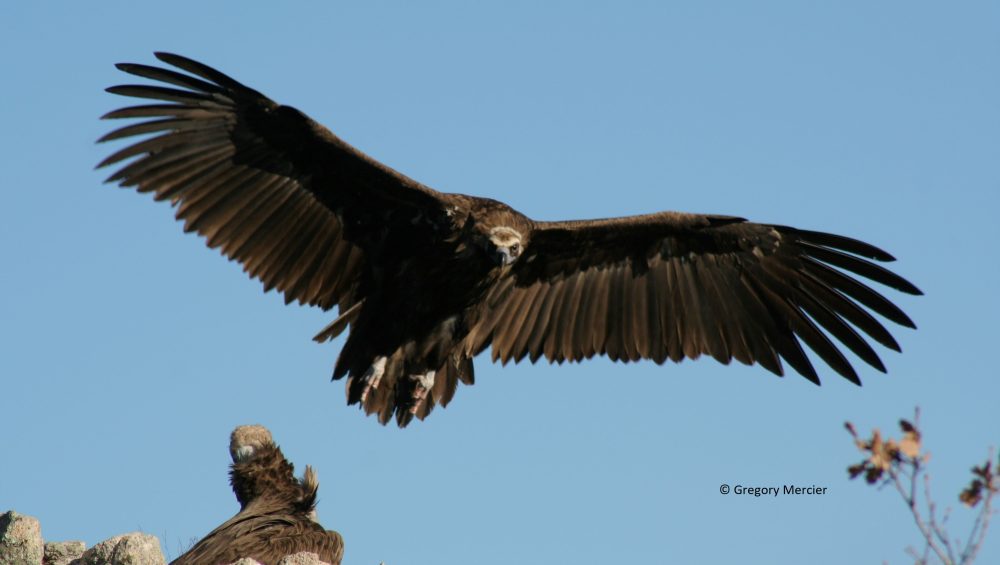A recent study by SPBT examines how wind turbines affect the flights and energy expenditure of the Black Vulture.
Over the last 25 years, 276 wind turbines have been installed in Evros and Rodopi, and the interest in installing many more remains quite strong. From the early years, it was realised that the wind turbines site selection, within critical areas for protected birds, was highly problematic, and unfortunately, the mistakes in planning and licensing are still continuing to these days. As a result, the impacts of the non-proper wind turbines siting on emblematic species such as the Cinereous Vulture are undermining national and European protection and conservation efforts for the species.
The main and immediate threat of wind turbines is the collision of birds on the blades, which usually results in death and occasionally severe injury, however it is not the only threat. Indirect, additional threats from wind turbines jeopardize populations of rare birds of prey.
Arrays of wind turbines are installed on the ridges of Evros and Rodopi regions creating artificial barriers to bird flights. Areas chosen by birds due to favorable conditions (e.g., updrafts, connectivity, food availability, etc.) have been "occupied" by wind turbine arrays. Birds either attempt to cross them, facing collision risk, or avoid them, changing their flight paths away from the "occupied" ridges. Both options are to the detriment of the birds, since choosing alternative routes costs them energy.
This is shown in the recent study by SPBT, which investigated how wind turbines affect the flights and energy expenditure of the Cinereous Vulture in Evros and Rodopi. The study used data from birds fitted with transmitters (GPS/GSM) between 2016 and 2021. Data analysis was used to examine how often Cinereous Vultures approach or avoid wind turbines, whether they change their flight paths, and whether their daily energy expenditure increases with the number of wind turbines.
The main results showed that after the operation of wind turbines, Cinereous Vultures changed some flight characteristics: they reduced the frequency of crossing through wind turbine arrays and the daily distance flown around them. Additionally, there was a small but significant increase in the birds' daily energy expenditure, which increased with the total installed power of wind stations in the area.
The increase in energy expenditure, resulting from these changes, will increase as the number of wind turbines grows, and in combination with the additional threats Cinereous Vultures are facing (such as collision with wind turbines, poisoned baits, habitat degradation), it will have a negative impact on their "fragile" population.
This study contributes to a better understanding of how large birds of prey are affected by the development of wind energy, providing valuable insights to design sustainable solutions that will support both the green transition and the conservation of the Cinereous Vulture.
You can see the study here (in English with Greek abstract)
The study was conducted in the framework of the "Alliance for Wildlife"an initiative implemented with the support of WWF Greece in collaboration with 11 Greek environmental NGOs with a common vision for the welfare of wildlife and humans.



